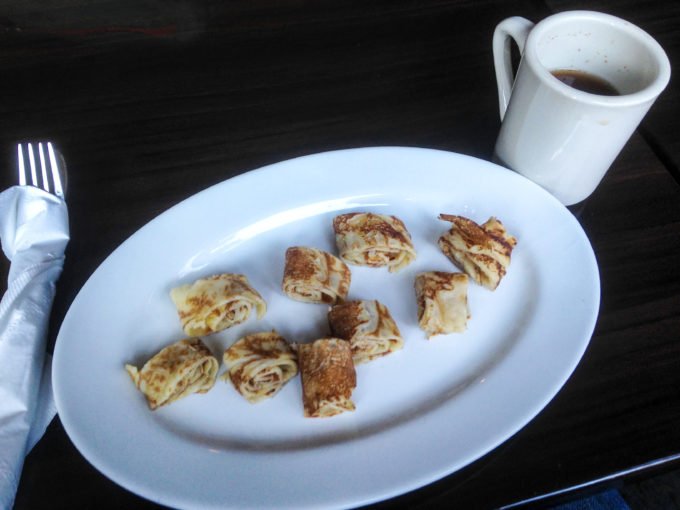
The Secret History of Somali Breakfasts in Harlem

The Secret History of Somali Breakfasts in Harlem
Malab iyo Malawaax on 116th St.
Safari, located on West 116th St. in Harlem, proudly stands as the only Somali restaurant in New York City today. The shaah (tea), a staple of the African Horn nation, is brewed with enough ginger to make you wince and enough cardamom to make you sneeze. And served alongside Malab iyo Malawaax, a crepe-style flatbread smeared with honey and butter, it represents a traditional Somali breakfast. Though it sits on the dessert menu at Safari, it can also be served with suqaar—beef or liver cooked in a savory soup—a staple of the local diet.
The stretch of Harlem on which Safari sits is traditionally known as Le Petit Senegal, and plays host to recently arrived Malians, Guineans, and Ivorians. But under the dashiki-ed mannequins and international calling posters that line the storefronts on 116th lies a deeper history of African influence, one that Safari struggles to keep alive in Harlem’s current ethnic landscape.
Coming over on Italian cargo ships as coal men in the early 1900s, Somalis settled in the Bowery before moving up to Harlem as subway lines were laid, in part by Somalis themselves. This community represented the first African immigrant group and the first Islamic group in the United States.
The voyage was harsh, taking 18 months from Somalia to New York around the southern tip of Africa. Women did not often make the journey and the community slowly dissolved into its surroundings. It was not until the 1950s that the Harlem Somali heyday was in full swing, precipitated in part by the harsh regime under Siad Barre and growing numbers of foreign-transfer students. The space that Safari currently occupies was, in the 1950s, a popular tea and smoke joint frequented by Somali immigrants. And just next door was the community center that, depending on the day, served as a place to pray or play cards.
1991 saw the collapse of the Somali state as Siad Barre’s dictatorship gave way to Islamic fundamentalism and clan warfare. Refugees began flowing into the U.S. and settled in the new Somali hubs of Toronto and Minneapolis. The arrival of West Africans coincided with the exodus of Somalis and the vacancies were quickly filled, leaving little trace of the neighborhood’s previous occupants.
The delis once run by Somalis were taken over by Yemenis. The markets and clothing stores were bought out by West Africans. The last remaining Somali establishments struggled to survive through the turn of the century, the last store closing in 2008. Very little of the Somali story was captured in text, much less in photographs. Aside from the handful of Somalis still in Harlem, the only remaining testament to the story is Safari, serving forth this history one breakfast at a time.